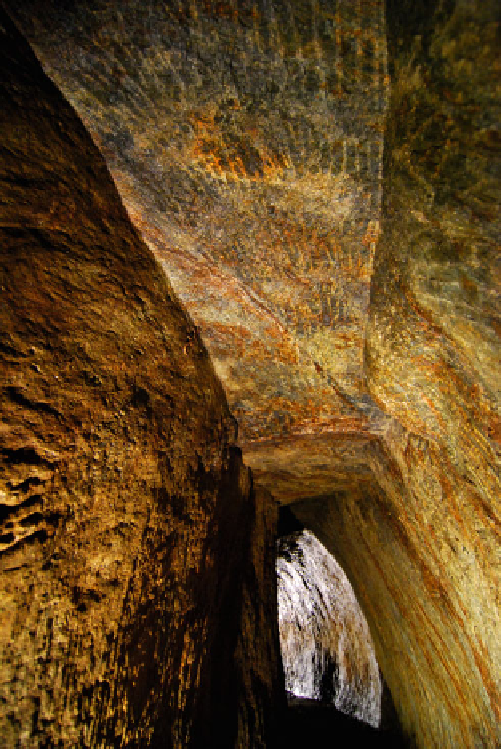Geology Reference
In-Depth Information
hydrogeology, palaeoclimatology and geological hazards.
However the Apuan Alps owe most of their fame to the
beauty of their marbles as well as to the large caves of the
karst underground.
This paper describes the geoheritage of the Apuan Alps,
from an historical perspective of the quarrying and mining
activities and the geological research into geotourism
(Newsome and Dowling
2006
; Hose
2012
).
An important objective of this paper is to share with the
aspiring geopark community the main actions taken by the
Apuan Alps Geopark Authority to enhance knowledge and
understanding of the Park
'
s geoheritage. This contribution is
mainly directed to territories, such as those in Africa, that are
taking their
rst steps in establishing geoparks under the
umbrella of the African Geoparks Network. For such pro-
jects that are at an early stage of development, it is important
to start with clearly de
ned objectives consistent with the
global Geopark concept.
2
Apuan Alps History: Quarrying, Mining
and Geological Research
Human activity has long been closely associated with the
georesources of the Apuan Alps. Indeed, quarrying of the
Apuan marbles is the longest lasting such activity in the
world and probably it is also one of the most fruitful in terms
of the quantity and quality of the extracted ornamental
stones. As far as we know, quarrying and
rst marble arti-
facts date back to the Etruscans in the second half of the 6th
Century B.C. (Bruschi et al.
2004
; Bartelletti and Cantisani
2011
). Then, throughout the Archaic and Hellenistic ages
and later, during the Roman times, Apuan marbles (known
as Lunense Marble and later as Carrara Marble) provided the
material for the major sculptures and civil and religious
monuments that spread all over the Roman Empire (Ward-
Perkins
1977
; Dolci
1988
; Granger et al.
2011
). However,
during the Renaissance, more than in any other historical
period, a large number of sculptors (e.g., Michelangelo
Buonarroti) turned to the Apuan Alps for their white marble.
Over time, the quarrying activities have focused on almost
every metalimestone, metabreccia and calcareous schist
occurring in the Apuan Alps, introducing to the market
many commercial varieties of stones with various names and
uses (Carmignani et al.
2007
).
The
Fig. 2
Old medieval gallery in Bottino Mines in the southern Apuan
Alps Geopark (photo by Stefano Pucci)
The Apuan Alps area also has long been of interest to
geological researchers because of its economic resources and
heritage. In the 18th century, Vallisnieri (
1715
) developed a
new theory about the perpetual water cycle, testing the close
relation between springs and karst cavities, thus demon-
strating the meteoric origin of the spring waters. The
rst
geological observations were made (Targioni Tozzetti
1752
;
Savi
1833
) and detailed, 1:25.000 scale, geological maps
were completed by the end of the 1800s (Zaccagna
1880
).
Stoppani (
1872
) and Cocchi (
1872
) were the
rst to recog-
nise moraine deposits in the Apuan Alps and presented their
rst evidence of
Quaternary glaciations in the Apennine belt. In Italy, the
interpretation of nappe tectonics was introduced for the
ndings to the scienti
c community as the
rst exploitation of ore deposits also took place dur-
ing the Etruscan and Roman periods, but it was only during
the 16th century that mining
rst
time in the Apuan area (Steinmann
1907
). This theory,
suggesting the tectonic duplication of the continental margin
succession (Tuscan units), was supported by Lencewicz
(
1917
) and Tilmann (
1926
), and the Apuan Alps were
recognised as a tectonic window. Since then, research on the
geological evolution of the area has become increasingly
ourished, mainly the working
for silver-lead in the Bottino Mines (southern Apuan Alps)
(Fig.
2
). Industrial exploitation was active in the 19th century
but mining ceased after the Second World War when pro-
duction became uneconomic.



